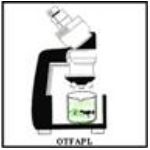AGLS 6502 Activities
Activity 2.1 - The Animal Kingdom
1. Using Box 2.1 in Lecture 2, select a phylum each from the categories vertebrates and invertebrates. Now describe the characteristics of the phyla you have chosen.
You may use Reading 2.1 to help you.

2. Based on what you have written above, can you indicate any notable differences between the characteristics of vertebrates and invertebrates.

Answer tips:
The major differences between vertebrates and invertebrates is the presence of:
- an internal skeleton;
- a spinal cord; and
- a well differentiated Central Nervous System, Digestive System and Circulatory System.
Check to see how your response corresponds with the above answers.
Activity 2.2 - Describing the Roles and Functions of Ruminants to Mankind
1. Why are ruminants important to mankind?

2. Begin by writing down four different roles and functions of ruminants to mankind, that you can identify: (You may refer to Reading 2.2 in Lecture 2)
1._____________________________________________________
2._____________________________________________________
3._____________________________________________________
4._____________________________________________________
3. Give your definition of development and one example.

4. After reading the views of Demas (1974) which encompasses the meaning of the term development as it pertains to the Caribbean region, do you agree that identity contributes significantly to Caribbean development and unity?

5. In your own words, what does the term “dependent under-development” means to you?

6. Do you think that the term development is sometimes confused with dependent under-development?

7. If you are from a country other than the Caribbean describe what does the term development mean based on the economic and societal scenario that exist in your country?

8. However, if you are from the Caribbean country what do you think the term development would mean to the Caribbean in the 21st century? 
Answer tips:
Your answer to 1 and 2 may have included the following roles and functions:
- the ability of ruminants to convert crop wastes and fibres indigestible to man and monogastrics, into useful products;
- the usefulness of their waste as energy sources;
- their usefulness as a form of transportation;
- they provide value added products such as hides, skins and horns.
Activity 2.3 Development and Livestock Science
1. Now that you have been introduced to the categories of Livestock, Development and Livestock Development

2. Write down the 3 main factors affecting the success or failure of livestock development projects.

3. Can you briefly list and describe the 3 quantitative models used to assess the planning of livestock development projects.
4. Based on the World Banks review what do you think is needed for future livestock projects in developing countries?

Answer tips:
If your answer to 2. included the following:
- the adequacy of producer incentives provided;
- the appropriateness of the technology used; and
- the capacity of the responsible institutions for project planning and implementation.
Then you were correct!
For question 3, remember, the 3 models used are :
- Demand-driven model;
- Feed accounting model; and
- Herd growth model.
Check to see if your answer to 4. included some of the following:
- the ability to operate in liberalized economic environments;
- rely less on expatriate technical assistance;
- give more attention to poverty alleviation, food security and women; and
- generally rely less on ‘high-tech’.
- You are free to more additions to the list.
